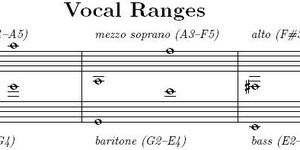Music Science Projects (36 results)
While everyone else is paying attention to what they see, maybe you're focusing on what you can hear. Explore the physics of sound, musical instruments, and even how people respond when they hear music.
|
Select a resource
Sort by
|
Beats are a pattern of oscillating sound intensity (i.e., the volume of the pattern grows and fades with a regular cycle). They occur when two tones of almost equal frequency interfere. People can perceive beat frequencies below about 7 Hz. Figure out how to create sound files to play pure tones on your computer. Create files with a pure tone of one frequency in the left channel, and a pure tone of a different frequency in the right channel. Systematically explore different frequency…
Read more
Featured
Have you heard that garlic powder is supposed to inhibit the growth of bacteria? Which do you think would make a better disinfectant: a solution of garlic powder or a solution of bleach? This project shows you a straightforward way to compare the effectiveness of different disinfectants (or other antimicrobial agents), by measuring zones of inhibition on a culture plate.
Read more
You probably know that where you live on Earth affects your weather. If you live in a far northern or far southern latitude, you experience colder temperatures than people who live near the equator at latitudes close to zero. Your latitude on Earth affects many aspects of your culture, like how you dress, what kind of house you live in, what foods you eat, and even how your day is structured: what time you go to school, to dinner, and to sleep. Some cities at latitudes closer to the equator,…
Read more
Here's an interesting way to get some music into your science fair project. What predictions would you make about people with relative pitch?
Read more
What do a guitar, a piano, a harp and a violin have in common? Turns out a couple of things, including a soundboard. All stringed instruments use a soundboard to amplify (greatly increase) the volume of the sound coming from vibrations of the strings. The soundboard is positioned so that it gathers the sound vibrations coming from the strings and then retransmits them at an even greater volume when it begins to vibrate. Soundboards are common in the world of musical instruments, but they can…
Read more
Have you ever noticed that hip-hop songs have a fast tempo, while country ballads are usually slow? Do you think there is a correlation between the number of beats per minute (bpm) in a song and the type of music? You can explore whether different genres of music have different bpm ranges by measuring the bpm in several different songs from a number of different genres. Bpm can be measured using free music software, like the one listed below in the Bibliography, or by counting all the beats you…
Read more
Do violin students have better relative pitch than piano students? Since the violin requires the player to choose the correct location to stop the string in order to sound the proper note, you might think that violin players would, as a result of practice, have better ear training than piano students. On the other hand, you could argue the opposite viewpoint, since piano students would have the benefit of hearing correct intervals (assuming that the piano is in tune). Which hypothesis do you…
Read more
|
Explore Our Science Videos
How to Build a Toy Car - Science Project
Homemade Hand Sanitizer Gel
Investigate Alien Genetics







